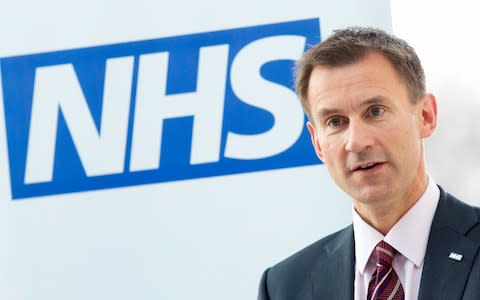Revealed: death rates for NHS trusts

Patients are dying at a higher than expected rate at ten NHS hospital trusts, raising “alarms” about their safety, new figures reveal.
Campaigners have condemned as “very troubling” official mortality data suggesting significant numbers of unnecessary deaths at seven per cent of all English trusts.
Five of these institutions, including two named in a national report into serious hospital failures, have shown an unexpectedly high number of deaths for the second year running in the 12 months up to March 2017.
The latest figures analysing hospital mortality are very troubling
Hugh Williams, AVMA
They include important centres such as the South Tyneside NHS Foundation Trust and Blackpool Teaching Hospitals NHS Foundaiton Trust.
The Summary Hospital-level Mortality Indicator (SHMI) scheme uses a number of factors to predict how many patients would be expected to die at a specific hospital assuming everything is running well.
It allows health chiefs to then compare the actual total against this projection as an early warning for institutional safety issues.
The scheme was set up in response to the Mid Staffordshire scandal, where up to 1,200 more patients died over three years than would have been expected.
While official statisticians stress a high SHMI score does not necessarily indicate poor performance, they say it “should be viewed as a smoke alarm which requires further investigation”.
Wye Valley NHS Trust and United Lincolnshire Hospitals NHS Trust also made the outliers’ list for the second consecutive year.

Hugh Williams, Deputy Chief Executive of Action Against Medical Accidents, said: “The latest figures analysing hospital mortality are very troubling.
“The Government and Care Quality Commission have to make sure that everything that can be done is being done to investigate hospital deaths and ensure high quality care.
“If there are any problems action needs to be taken quickly to find out what has gone wrong, to be open with the families concerned and to make sure improvements are made and sustained.”
Both Blackpool and North Lincolnshire hospitals were named in a 2013 review by the medical director of the NHS into 13,000 needless deaths across 14 trusts.
The new figures also found that 17 trusts had a lower than expected number of deaths in 2016-17.
They included some of the major London trusts, such as Barts Health, Chelsea and Westminster, and Imperial College Healthcare, as well as Poole and Cambridge hospitals.
The data is published as as the Government is considering capping the costs payable to lawyers acting for a wide range of victims of NHS negligence.
The Ten NHS Trusts with higher than expected deaths in 2016-17
Blackpool Teaching Hospitals NHS Foundation Trust (second year running)
James Paget University Hospitals NHS Foundation Trust
Northern Lincolnshire and Goole NHS Foundation Trust
South Tyneside NHS Foundation Trust (second year running)
Southend University Hospital NHS Foundation Trust (second year running)
Southport and Ormskirk Hospital NHS Trust
The Royal Wolverhampton NHS Trust
United Lincolnshire Hospitals NHS Trust (second year running)
Wrightington, Wigan and Leigh NHS Foundation Trust
Wye Valley NHS Trust (second year running)

 Yahoo News
Yahoo News 
